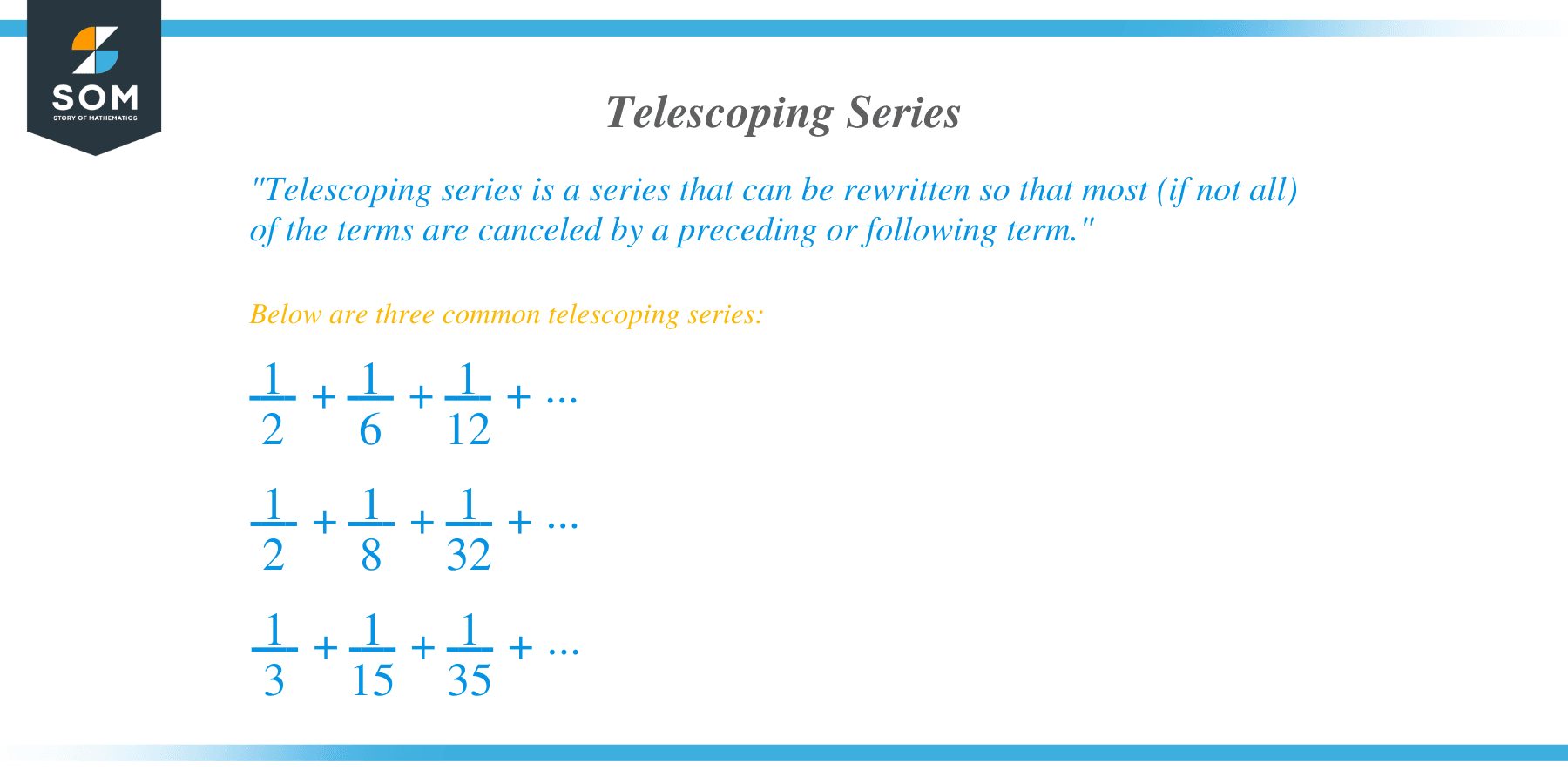- Home
- >
- Telescoping series – Components, Formula, and Technique
JUMP TO TOPIC
Telescoping series – Components, Formula, and Technique
 One of the most unique and interesting series we’ll learn in precalculus is the telescoping series. Telescoping series exhibit a unique behavior that will test our knowledge of algebraic manipulation, series, and partial sums.Telescoping series is a series that can be rewritten so that most (if not all) of the terms are canceled by a preceding or following term. This series has an extensive application in higher mathematics, computational theory and a fun series to explore while testing our algebraic skills. One of the most applied algebraic techniques in manipulating telescoping series is the use of partial fraction decomposition. Make sure to review and refresh your knowledge on this particular topic since we’ll be applying it extensively in this article.We’ll also be applying our knowledge on limits, so make sure to do a quick refresher on how we evaluate limits. Let’s begin by understanding the telescoping series’s components and eventually learn how the series got its name.
One of the most unique and interesting series we’ll learn in precalculus is the telescoping series. Telescoping series exhibit a unique behavior that will test our knowledge of algebraic manipulation, series, and partial sums.Telescoping series is a series that can be rewritten so that most (if not all) of the terms are canceled by a preceding or following term. This series has an extensive application in higher mathematics, computational theory and a fun series to explore while testing our algebraic skills. One of the most applied algebraic techniques in manipulating telescoping series is the use of partial fraction decomposition. Make sure to review and refresh your knowledge on this particular topic since we’ll be applying it extensively in this article.We’ll also be applying our knowledge on limits, so make sure to do a quick refresher on how we evaluate limits. Let’s begin by understanding the telescoping series’s components and eventually learn how the series got its name.What is a telescoping series?
Identifying telescoping series can appear trickier than identifying simpler series such as arithmetic and geometric series. That’s because a telescoping series requires us to think creatively on how we can manipulate the terms to expand then simplify them later on.Below are three common telescoping series:- $\dfrac{1}{2} + \dfrac{1}{6} + \dfrac{1}{12} + …$
- $\dfrac{1}{2} + \dfrac{1}{8}+ \dfrac{1}{32} + …$
- $\dfrac{1}{3} + \dfrac{1}{15} + \dfrac{1}{35} + …$
 When we talk about telescoping series, it’s inevitable for us to talk about telescoping sums – this is the process of simplifying a series or an expression by expanding them first then canceling out the consecutive terms of the new expression.This is also why we call this technique telescoping sums and the series itself a telescoping series. Just like a telescope, for us to make sense of the value, we’ll need to expand the view first before we can focus on the values that matter.To better understand what the telescoping series is, let’s take a look at its algebraic form.
When we talk about telescoping series, it’s inevitable for us to talk about telescoping sums – this is the process of simplifying a series or an expression by expanding them first then canceling out the consecutive terms of the new expression.This is also why we call this technique telescoping sums and the series itself a telescoping series. Just like a telescope, for us to make sense of the value, we’ll need to expand the view first before we can focus on the values that matter.To better understand what the telescoping series is, let’s take a look at its algebraic form.Telescoping series formula and definition
Let’s say we have $\sum_{n=1}^{\infty} b_n$, an infinite telescoping series, we can rewrite this as $b_n$ as $a_n – a_{n+1}$, where $a_n$ is a term from a properly constructed sequence.A series is said to be telescoping when we express it as $\sum_{n=1}^{\infty} b_n = \sum_{n=1}^{\infty} (a_n – a_{n+1})$\begin{aligned}\sum_{n=1}^{\infty} b_n &= (a_1 – a_2) + (a_2 – a_3) + (a_3 – a_4) + … + (a_{n-1} – a_n) \\&= a_1 + (-a_2 + a_2) + (-a_3 + a_3) + … + (-a_{n – 1} + a_{n – 1}) – a_n\\&= a_1 – a_n\end{aligned}When this happens, we simply cancel out the terms and retain the remaining values and we’ll have the most simplified form of the telescoping series as shown by the general form above.How to find the sum of a telescoping series?
The best way to understand what makes a telescoping series unique is by simplifying the series and finding out its sum. Here are some helpful pointers when finding the sum of a telescoping series:- If it’s not yet given, find the expression for $a_n$ and $S_n$.
- Use partial fraction decomposition to rewrite the rational expression as a sum of two simpler fractions.
- Rewrite $a_n$ using as sum of these two fractions then find the value of $\lim_{n\rightarrow \infty} \sum_{n=1}^{\infty} S_n$.
